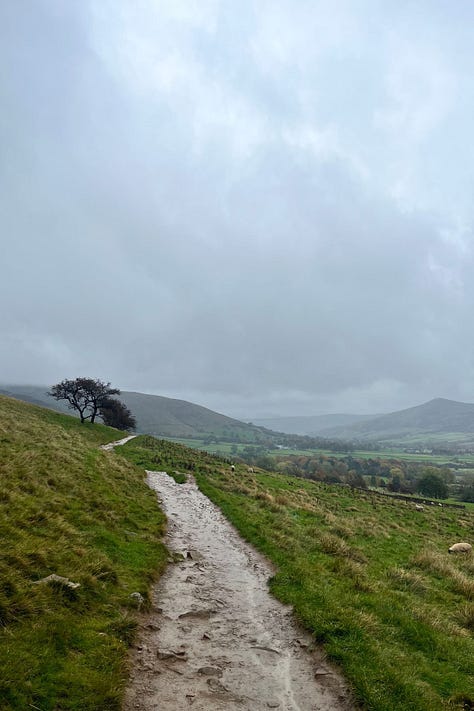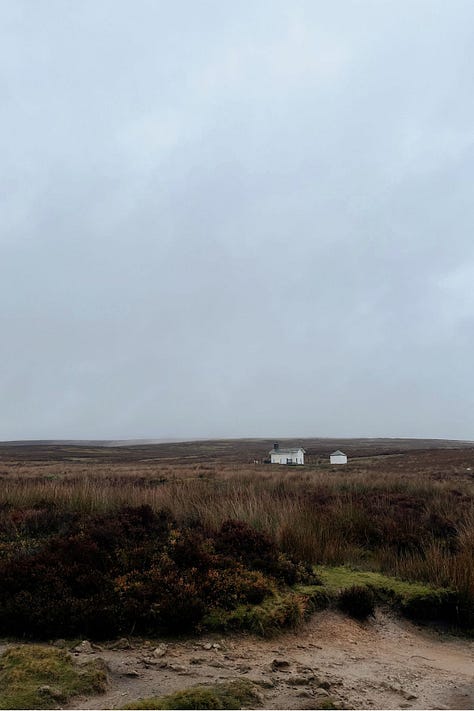A Knight’s Tale: The Magic of Storytelling in Medieval England
Connecting with our ancestors through the stories we tell about ourselves
Thank you to everyone who contributed to my thinking on this topic through a Note I posted earlier this week (linked HERE).
, , &Some email providers may truncate this email due to the links and photos contained within it. Please read it in the app for the full user experience.
Hello, I’m Holly and I write about the untold tales of medieval lives. Subscribe for free to enjoy regular posts from me, including book reviews, historical discussions, and monthly roundups of what’s been great in the history/archaeology world. Or, even better, become a paid member to unlock ALL of my content, including all my historical fiction writing (flash fiction, short stories, miniseries and a serialised novel), to open up a world of history as you were never taught it.
How do you interact with stories?
I’ve been struck time and again by the ways in which storytelling surrounds us. Sometimes it’s explicit; sometimes less so. It was
that encouraged me to look for the stories all around me, and now I can’t help but see them everywhere. It was this curiosity that I shared in the Note linked below: these people are not medieval (the focus of this newsletter) by a long way, but I found myself eager to know what had led them to this point in their lives, why they were sat on the underground platform in wedding clothes, how the love so obviously displayed had developed. It was just a momentary interaction between them and me (one that they aren’t even aware of), and yet their lives are just as textured and vibrant as my own. I found myself wanting to know their story.Stories and storytelling are integral to our existence, and have been throughout history.
They help us to understand the world around us, as well as events in our past.
They can help us cope with difficult or traumatic experiences.
They can transform or even create identities for ourselves and others.
It is something that we do nowadays, in real life and online. I’m not the first one to acknowledge that I only really post ‘the good times’ on Instagram, for example, as I want people to see a strong, capable version of me (rather than a mum at the end of her tether with a teething baby…).
We have the ability, through our words, to create whole worlds and affect others’ understandings.
And this is not something unique to our own time.
Stories and storytelling were profoundly important facets of Anglo-Saxon life too.
This was a deeply unconnected time. Yes, it is largely a myth that medieval people spent their lives within the same 5 mile radius (click HERE to read a post I wrote recently all about women’s travel during this time). But, there was no Internet; the postal system was over a millennium away; and travel took a really, really long time.
If news was to spread, it happened through people’s words. Rarely (if ever) on paper; almost always by actual word of mouth.
During the early medieval period, around the fifth to ninth centuries A.D., itinerant storytellers shared important news and updates between courtly homes, often in the form of epic poems. It was one way that they communicated as well as made sense of what had happened. People gathered around hearth fires to hear compelling tales of battle victories, love, and heartbreaking losses, captivated by the poet’s enigmatic performance. These were long poems, intended to take the listener on a journey away from their homes and through a range of different emotions.
It’s quite a romantic image, really, and profoundly shaped the culture of the time.
Felix’s Life of Saint Guthlac, for example, the story of a warlord-turned-holy man, describes how the young noble was inspired to bravery by stories of his ancestors:
Now when his youthful strength had increased, and a noble desire for command burned in his young breast, he remembered the valiant deeds of heroes of old, and as though awakening from a sleep, he changed his disposition and gathering bands of followers took up arms.1
Later on, the same source describes how Guthlac
contemplate[d] the wretched deaths and the shameful ends of the kings of his race in the course of past ages…2
A very ‘meta’ example of this is included in the epic poem Beowulf. Itself a later Anglo-Saxon poem based on those shared by itinerant storytellers (in the same way that we might emulate the style of a nineteenth-century gothic novel for a particular effect), it includes a vignette of one of these storytellers at work:
Then Hrothgar, leader in battle, was entertained with music - harp and voice in harmony. The strings were plucked, many a song rehearsed, when it was the turn of Hrothgar's poet to please men at the mead-bench, perform in the hall. He sang of Finn's troop, victims of surprise attack, and of how that Danish hero, Hnæf of the Scyldings, was destined to die among the Frisian slain.
Beowulf, from Crossley-Holland (1982: 100).
The poem then includes what is known as the Finnsburh Fragment, the story shared by the travelling storyteller. This is a story of war, designed to provoke admiration and warrior-like behaviour in its listeners. The Finnsburh Fragment is likely to be a work of fiction, but it is rooted in the tradition of itinerant storytelling. It illustrates the use of stories to construct and disseminate a ‘public image’, at a time when the very fabric of society was being reimagined. It was an exciting time, with multiple cultures blending, reacting, and moulding around each other; a time ripe for opportunist leaders to take advantage of the power vacuum and present themselves in the best (however semi-mythical) way possible.
In a way, I like to think of myself as carrying on this tradition of storytelling, as I weave narratives around individuals’ lives, adding a little sparkle here and there. I write to share their stories with a wider audience than might otherwise come across them, highlighting our connections with them even across the span of millennia.
For the Anglo-Saxons, this was unquestionably a social activity - but it could also be a tactical one.
Because it afforded those in power a way of constructing a view of themselves that they wanted to be shared. This was a time of identity and dynastic formation - before these things were fact-checked. Who would know if a story was inauthentic? What was to stop people vividly describing definitive victory that had actually been more of a lucky escape? I like to see these poems as a way that individuals co-created their ‘official’ image with the poet, the way that they wanted to be seen by others. Whether they actually embodied this image has, unfortunately, been lost to the mists of time in most cases…
We will never know in full how much of these stories has been altered, what the people behind them were ‘really’ like. But then, I’m not sure that this is the point of history. Historians, archaeologists, literature specialists: we’re all interested in the stories people told about themselves, in writing, material culture, or the landscape, and the reasons why they felt compelled to tell these stories. It is that gap between the reality and the image that is so interesting, that reveals the very humanness of these individuals.
We are not, really, so very different from our early medieval forebears: we still create, edit and tell stories so that others think of us in a particular way.
I wonder, how do you see storytelling in your life? Do you think it helps or hinders our connections with others? And are there any stories that you feel particularly connect you with the people of the past?
Similar posts you might enjoy:
I hope you’ve enjoyed reading this free post from Telling Their Tales.
To receive regular posts like this, including book reviews, historical discussions, and monthly roundups of what’s been great in the history/archaeology world, please subscribe using the button below. OR, even better, join our paid membership community to unlock ALL my content, including all my historical fiction writing (flash fiction, short stories, miniseries and a serialised novel), to open up a world of history as you were never taught it.
Did you know that you can now buy my photos from my Etsy Store?
I have photos from a range of locations across the UK, available for instant digital download, including those in the gallery below. Check it out via the link below.



Felix’s Life of Saint Guthlac. Colgrave, Bertram, trans. Felix’s Life of Saint Guthlac. Cambridge: Cambridge University Press, 1956. Ch.16 (p.81).
Ibid. Ch.18 (p.83).













Holly, I loved this post! I've been pondering your questions since I read it yesterday and I have a few thoughts:
1. One place I see storytelling come alive is at family gatherings -- a person's role in their family is often solidified by the stories that are told about them (sometimes over and over again), for better or worse.
2. I've also been reflecting on the way that I tell stories about my life when catching up with friends -- how vulnerable am I willing to be and to what end? Do I frame the same stories more positively or negatively based on who I'm talking to? Why filter myself in that way?
3. What about the stories that we tell about ourselves TO ourselves? I'm thinking imposter syndrome just might be telling ourselves untrue stories about our qualifications and abilities. What if we took a page out of the Anglo-Saxon's book and built ourselves up in the face of new challenges?
Thank you so much for such great food for thought!
A lovely read. Storytelling is a fascinating art indeed and is so primal in the way it is woven into our psychology. I enjoy your writing immensely ☺️